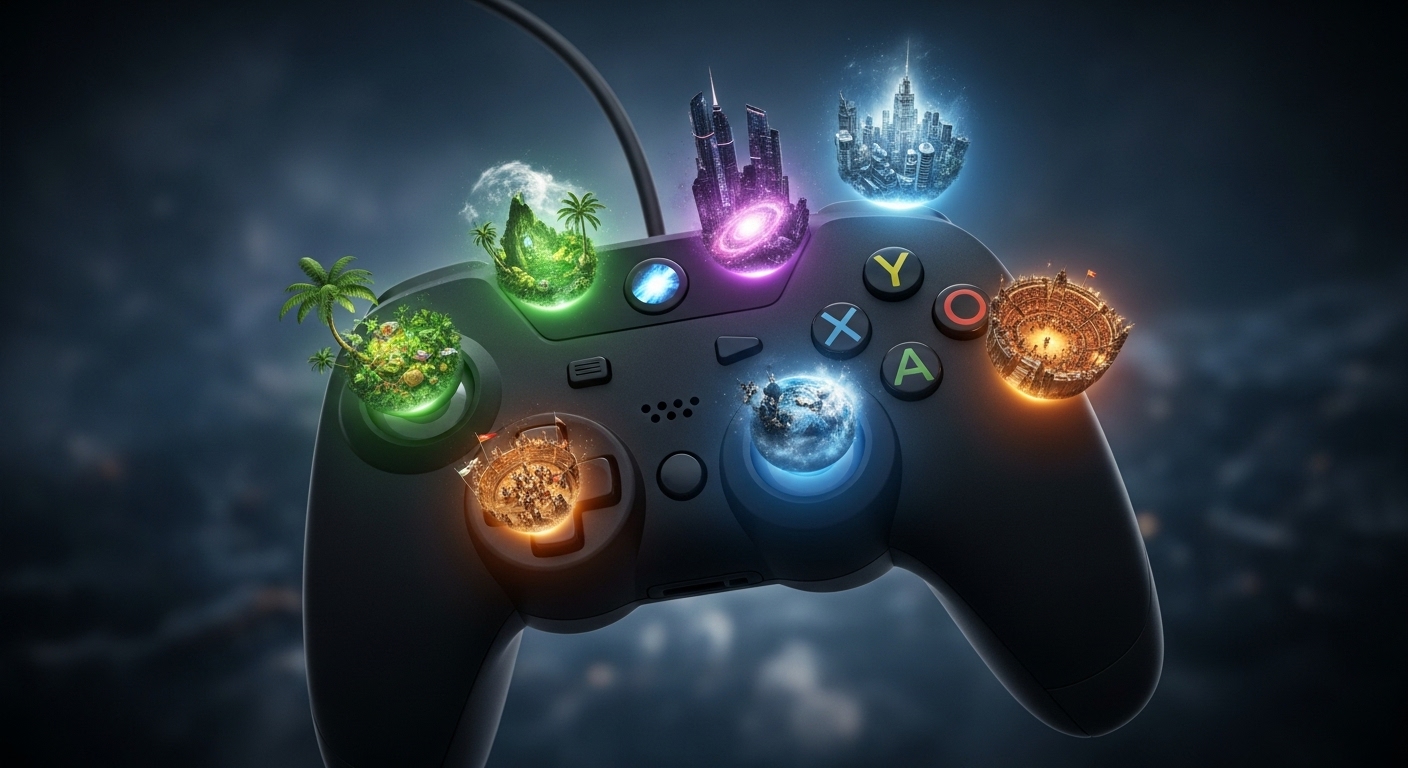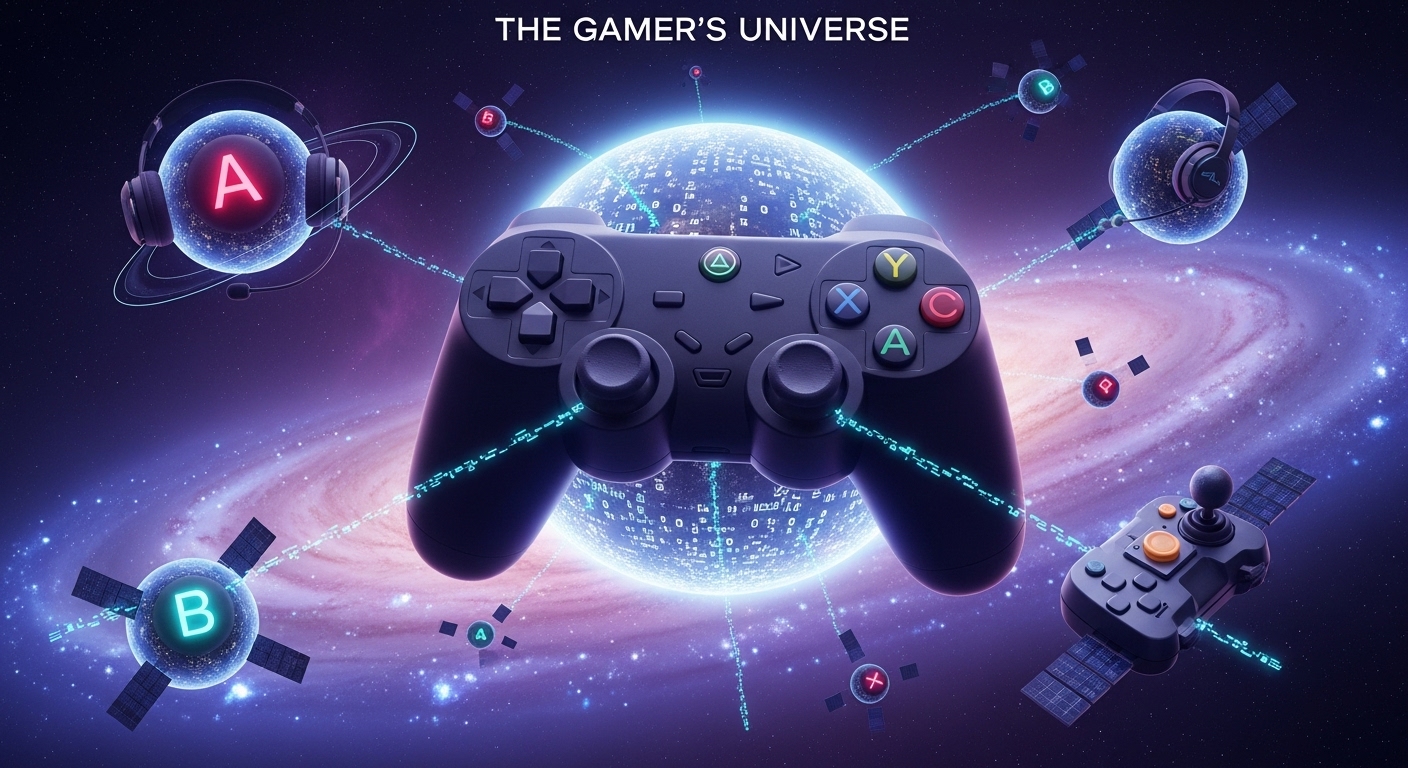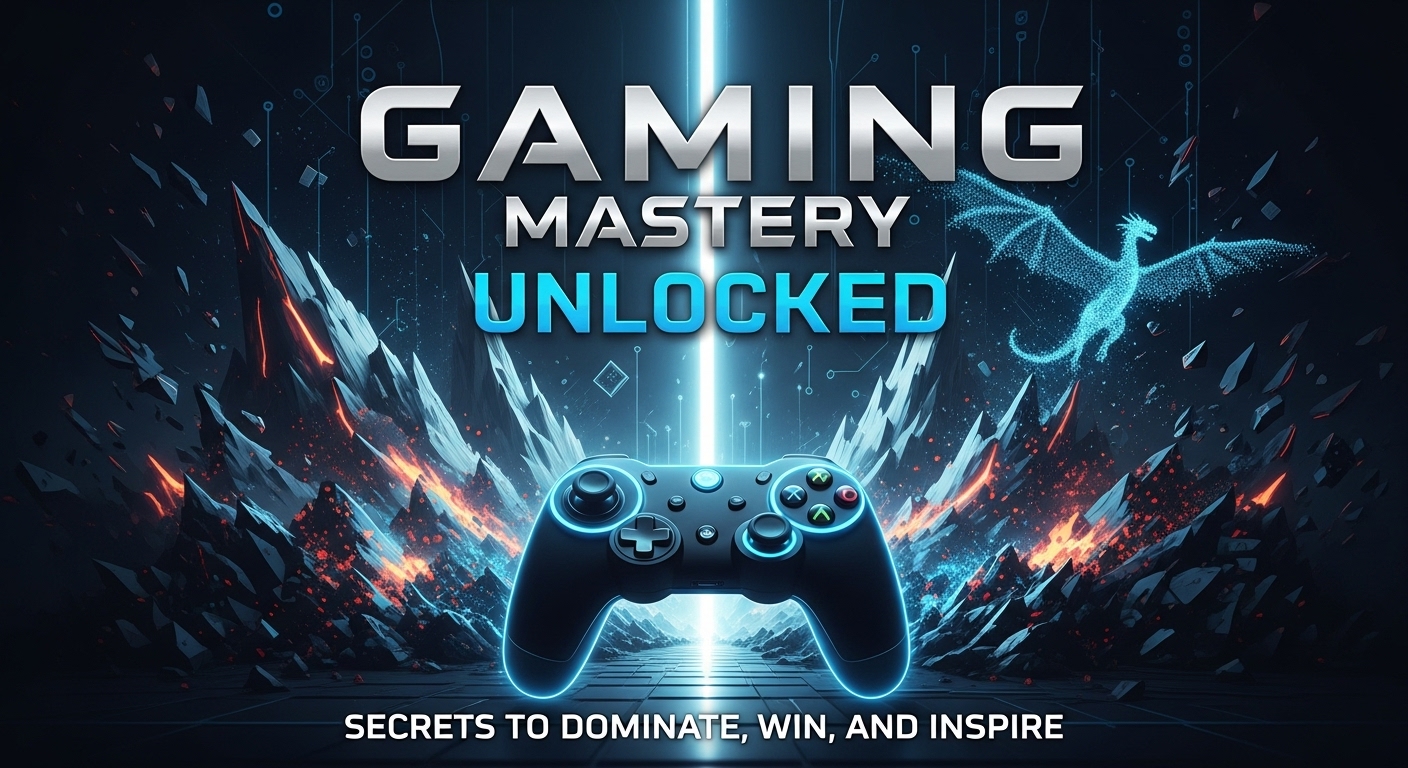Introduction
Gaming is no longer just a pastime; it’s a massive cultural and technological movement that has reshaped entertainment, art, communication, and even education. What began as simple pixelated adventures on bulky arcade machines has evolved into a multi-billion-dollar industry that touches nearly every corner of the world. Gaming today means more than just pressing buttons — it’s about storytelling, creativity, competition, and connection. From solo journeys through immersive open worlds to global esports tournaments watched by millions, the world of gaming has transformed dramatically over the past few decades.
The Birth of Gaming
The story of gaming begins long before the consoles and computers we know today. In the early 1950s and 1960s, computer scientists experimented with basic simulations and games like “Tennis for Two” and “Spacewar!” These early experiments laid the groundwork for interactive entertainment. By the 1970s, gaming began to move into the public eye with arcade machines like “Pong” by Atari. The simplicity of Pong — two paddles and a bouncing square representing a ball — captivated players everywhere. It proved that games didn’t need to be complex to be fun. Soon, arcades were filled with games like “Space Invaders,” “Pac-Man,” and “Donkey Kong.” The bright lights, energetic sounds, and competition created an entirely new form of entertainment for young people around the world.
The Console Revolution
The late 1970s and early 1980s introduced the concept of home gaming. Consoles such as the Atari 2600 brought video games into living rooms, allowing players to experience arcade fun at home. However, it was the release of the Nintendo Entertainment System (NES) in 1985 that truly revolutionized home gaming. Titles like “Super Mario Bros.,” “The Legend of Zelda,” and “Metroid” didn’t just entertain — they defined genres and established characters that remain cultural icons. Sega also joined the race with the Sega Genesis, bringing fast-paced gameplay with “Sonic the Hedgehog” and pushing gaming technology forward.
By the 1990s, the console wars between Nintendo, Sega, and later Sony, who entered with the PlayStation, sparked incredible innovation. Graphics improved, stories deepened, and players began to expect more from their games than ever before. The move from 2D sprites to 3D environments, pioneered by games like “Super Mario 64” and “Tomb Raider,” marked a new era. Suddenly, players could explore vast worlds, interact with complex environments, and feel a sense of immersion like never before.
The Rise of the PC Gamer
While consoles dominated living rooms, personal computers quietly built their own gaming legacy. In the early 1990s, PC gaming became synonymous with creativity and customization. Games like “Doom,” “Quake,” and “Wolfenstein 3D” not only popularized the first-person shooter genre but also introduced multiplayer gaming through local networks and eventually the internet. Strategy games like “Civilization” and “Age of Empires” gave players control over entire civilizations, blending history with strategic thinking. Role-playing games (RPGs) such as “Baldur’s Gate” and “Diablo” brought deep storytelling to the PC platform.
The PC’s advantage lay in its flexibility. Players could upgrade graphics cards, tweak performance settings, and even modify games themselves. The modding community became a cornerstone of PC gaming, with player-created content extending the life of many titles. Even today, PC gaming remains at the forefront of technical innovation, supporting everything from indie experiments to massive online worlds.
The Internet Changes Everything
The introduction of the internet transformed gaming forever. Online multiplayer games allowed players from around the globe to connect, compete, and cooperate in real time. Titles like “EverQuest,” “World of Warcraft,” and “Counter-Strike” defined the online era, creating communities that transcended geography.
Gaming evolved from something people did alone or with friends nearby into a social experience that connected millions. Voice chat, online leaderboards, and multiplayer matchmaking became standard features. Entire friendships — and sometimes rivalries — were built in digital spaces.
The internet also made digital distribution possible. Platforms like Steam revolutionized how games were bought and played, eliminating the need for physical discs and expanding access to thousands of indie developers who could now reach a global audience.
The Mobile Gaming Boom
In the late 2000s, the rise of smartphones brought gaming to everyone’s pockets. Simple yet addictive titles like “Angry Birds,” “Candy Crush,” and “Temple Run” captured millions of casual players who might never have considered themselves gamers before. Mobile gaming became a global phenomenon, especially in regions where consoles and PCs were less accessible.
But mobile gaming didn’t stop at casual titles. Games like “PUBG Mobile,” “Call of Duty: Mobile,” and “Genshin Impact” proved that even complex, graphically intensive games could thrive on handheld devices. Mobile gaming now represents a massive portion of the gaming market, blending accessibility with technological sophistication.
The Era of Esports
What began as friendly competitions in arcades has evolved into professional esports tournaments watched by millions of fans worldwide. Games like “League of Legends,” “Dota 2,” “Counter-Strike: Global Offensive,” and “Fortnite” have transformed gaming into a spectator sport, complete with sponsorships, prize pools, and dedicated teams.
Esports athletes train rigorously, just like traditional sports players. They analyze strategies, refine reflexes, and maintain mental focus. Tournaments fill stadiums, and live broadcasts attract audiences that rival major sports events. The competitive scene has given rise to gaming celebrities, commentators, and analysts — proving that gaming is more than entertainment; it’s a legitimate career path.
The Art and Storytelling of Modern Games
Today’s games are not just about mechanics or graphics — they are immersive works of art. Developers now treat games as storytelling platforms capable of delivering emotional depth and philosophical reflection. Titles like “The Last of Us,” “Red Dead Redemption 2,” and “God of War” demonstrate that video games can rival cinema in narrative power.
Indie games have also become storytelling powerhouses. Games like “Undertale,” “Celeste,” and “Hollow Knight” prove that creativity and heart matter more than massive budgets. These smaller projects often explore personal or emotional themes in ways mainstream media rarely dares to attempt.
Music, voice acting, and environmental design now play critical roles in creating immersive worlds. A well-composed soundtrack or a carefully written dialogue can make a player laugh, cry, or reflect deeply. Gaming has become an artistic medium capable of conveying human experiences in ways that movies or books cannot replicate.
Virtual Reality and the Future of Immersion
Virtual reality (VR) represents the next frontier of gaming. With headsets like the Oculus Quest and PlayStation VR, players can now step directly into game worlds. Whether it’s exploring alien planets, fighting zombies, or painting in 3D space, VR allows unparalleled immersion.
While VR is still developing, its potential is enormous. Beyond entertainment, VR is being used for education, medical training, and even therapy. The line between reality and simulation continues to blur as haptic feedback and motion tracking improve.
Augmented reality (AR) also brings gaming into the physical world. “Pokémon GO” showed how AR can turn the real world into a playground, blending digital creatures with real-life locations. As technology advances, the possibilities for immersive gaming experiences seem limitless.
Gaming and Community
One of gaming’s most powerful aspects is its ability to bring people together. Online gaming communities foster collaboration, friendship, and cultural exchange. Gamers share strategies, create fan art, write stories, and even build entire virtual societies.
Platforms like Discord and Twitch have become central hubs for gaming culture. Streamers entertain millions by sharing their gameplay live, while fans interact in real time. This interactive entertainment creates a sense of connection between players and audiences, making gaming more social than ever.
Gaming conventions such as E3, Gamescom, and PAX also serve as community gathering points, where fans and developers celebrate their shared passion. Cosplay, fan art, and meetups strengthen the bond between gamers, making it clear that gaming is as much about people as it is about pixels.
The Business of Gaming
Gaming has become one of the most profitable entertainment industries in the world, surpassing film and music combined. Developers and publishers invest billions into creating blockbuster games with massive teams of artists, programmers, and writers.
But the industry isn’t just about big studios. Independent developers now thrive thanks to digital distribution and crowdfunding. The democratization of game development tools means anyone with creativity and determination can bring their ideas to life.
Monetization models have also evolved. From one-time purchases to free-to-play systems with microtransactions, the industry constantly experiments with new ways to sustain itself. While controversial at times, these models also make gaming accessible to more people than ever.
The Psychological Impact of Gaming
Gaming’s impact extends beyond entertainment. Studies have shown that video games can improve hand-eye coordination, problem-solving skills, and creativity. Strategic and cooperative games promote teamwork and communication. Puzzle and simulation games encourage critical thinking and patience.
Of course, concerns about addiction, violence, and excessive screen time continue to spark debate. Like any form of media, gaming requires balance and mindfulness. When enjoyed responsibly, it can be a positive, enriching experience that enhances cognitive and emotional well-being.
Moreover, gaming has become a tool for therapy and education. “Serious games” are used to help patients recover from physical or mental challenges. Educational games teach complex subjects in engaging, interactive ways. For many, gaming provides a safe escape — a place to explore identities, overcome challenges, and connect with others.
The Cultural Influence of Gaming
Gaming has influenced art, fashion, language, and even politics. Iconic characters like Mario, Lara Croft, and Master Chief are recognized worldwide. Gaming slang, memes, and references appear in movies, music, and everyday conversation.
Esports athletes and streamers are modern celebrities, shaping trends and influencing audiences. Game soundtracks win awards, and cinematic game trailers debut alongside major film releases. The line between gaming and mainstream entertainment continues to blur.
Moreover, gaming has become a storytelling language for a new generation. It allows people to experience empathy by stepping into the shoes of others — whether exploring historical events, surviving dystopian futures, or living through deeply personal stories.
Inclusivity and Diversity in Gaming
In recent years, the gaming industry has made major strides toward inclusivity and representation. More games now feature diverse protagonists, cultural settings, and stories that reflect real human experiences. Developers are also creating accessible gaming experiences for players with disabilities, ensuring that gaming truly is for everyone.
Online spaces, though sometimes challenging, have also become platforms for advocacy and awareness. Players and developers alike use gaming to address social issues, promote equality, and inspire change.
The Future of Gaming
Looking ahead, gaming’s future appears boundless. Advancements in artificial intelligence promise smarter, more adaptive game worlds. Cloud gaming allows players to stream high-quality games without expensive hardware. Cross-platform play breaks down barriers between console, PC, and mobile gamers.
As technology evolves, so too will the ways we experience games. Interactive storytelling, AI-driven characters, and photorealistic graphics will continue to redefine what’s possible. Gaming may even merge with other forms of media — imagine movies where the audience controls the story or concerts held in virtual worlds.
But at its core, gaming will always remain about one thing: connection. Whether through competition, cooperation, or creativity, games bring people together. They give us the power to explore worlds, tell stories, and share experiences unlike anything else.
Conclusion
From the pixelated screens of the 1970s to the immersive virtual realities of today, gaming has evolved into one of the most powerful cultural forces in the modern world. It entertains, educates, connects, and inspires billions of people across every age and background.
Gaming is no longer just something we do; it’s part of who we are. It reflects our imagination, our struggles, our joy, and our desire to connect. As technology continues to advance, gaming will keep evolving — but the heart of it will remain the same: the thrill of play, the magic of discovery, and the power of shared experience.



